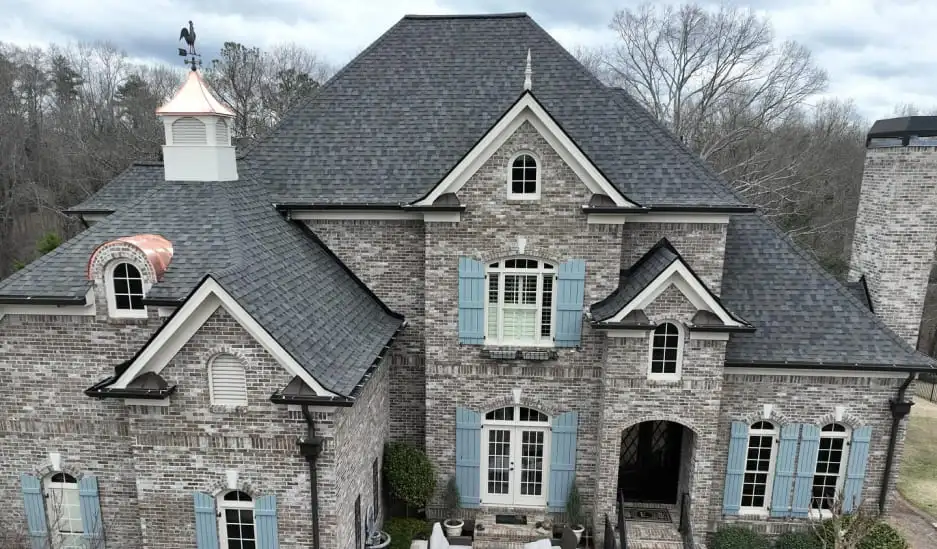Depending on the materials used to build your roof—and when it was last replaced—the original life expectancy for your roof could range from ten years to more than fifty. As roofs age, the wear and tear they suffer can cause small amounts of damage that weaken its integrity.
Eventually, this deterioration requires homeowners to replace their roof before water leaks and other damage penetrate the roof’s protective layers and make their way into the house’s structure.
But while roof replacements may be inevitable, their timing can be within your control as a homeowner—especially if you’re willing to provide maintenance and care for your roof over time.
Exactly (how often should a roof be replaced), and what can you do to extend the life of your roof—and push out the cost of a roof replacement? Read on to find out.
How Often Does a Roof Need to Be Replaced?
The life expectancy of your roof is determined, first and foremost, by the materials it is made from. In general, roofs with longer life expectancies come at a higher cost, which is something every homeowner consider when investing into a new roof—along with their best guess of how long they might live in that home.
Here’s a breakdown of (how often to replace a roof) based on some of the most common types of residential roofs:
How Long Does a Shingle Roof Last?
While shingles can be made from wood, metal, fiberglass and other materials, most non-asphalt shingle roofs are built to last about 25 to 30 years, although actual results may vary based on shingle installation, the local climate, and other factors.
How Long Does an Asphalt Roof Last?
Asphalt roofs made from standard three-tab shingles typically last around 20 years. But asphalt roof performance can vary, and the type of asphalt shingle used can also make a big difference in longevity: GAF asphalt shingles, for example, tend to last for up to 25 years, and come with a 15-year wind warranty.
How Long Does a Slate Roof Last?
Slate is a highly durable roofing material that can easily last for 75 years or longer before replacement is needed. With proper care, a slate roof could provide adequate protection for a home for more than 100 years.
What Causes a Roof to Wear Out Over Time?
A roof’s exposure to the harsh outdoor elements is the primary reason why your roof will ultimately need to be replaced. While different geographies bring these elements in different proportions, the most common causes of roof deterioration include:
- Wind. Wind can bend and dislodge shingles, and it can wear away asphalt and fiberglass on certain types of shingles.
- UV radiation from the sun. UV light can cause chemical reactions in certain roofing materials that break down those materials, make them more fragile, and eventually cause them to break.
- Rain and standing water. Water that stands on surfaces or becomes trapped can warp roofing materials and penetrate their water resistant layers.
- Leaves and other organic debris. Fallen leaves can accumulate on the surface of your roof and accelerate the deterioration of these materials.
- Falling debris. Blunt trauma from falling branches, hail and other objects can create sudden damage to your roof that breaches its protective layering, requiring repair or even a full roof replacement.
When to Replace a Roof: Signs It’s Time to Call a Roofing Professional
If you’re worried that your home’s current roof is due for a replacement, here are some signs to help you decide whether it’s time to contact a local roofing company:
- You can see visible damage from ground level. Missing shingles or clear damage should be addressed immediately.
- You have spotted water leaks inside your home. Unexplained water leaks could be coming from your roof and trickling down in your walls and other hidden spaces.
- Your shingles have bare spots. This is a sign that the materials used in asphalt and other shingles have worn away, eroding your protection.
- Visible sagging. Any sagging in your roof is likely due to structural problems underneath. These could be caused by water or other factors, and will require replacement.
Tips to Extend the Life of Your Home’s Roof
While roofs are relatively low-maintenance for homeowners, there are some simple steps you can take to extend your (roof life) and support its long-term health:
- Prune trees above your roof to reduce the risk of falling debris.
- Clear away moss, leaves and other organic debris that could wear away at shingles.
- Keep gutters clear to avoid overflows and standing water on your roof.
- Have roofing experts conduct regular inspections to check for damage, trouble spots, and the overall health of your roof.
By paying a little extra attention to your home’s roof, you can extend its lifespan and catch roofing problems before they cause damage in your home. If you already suspect your roof is in need of repair or replacement, contact a local roofing company today.



